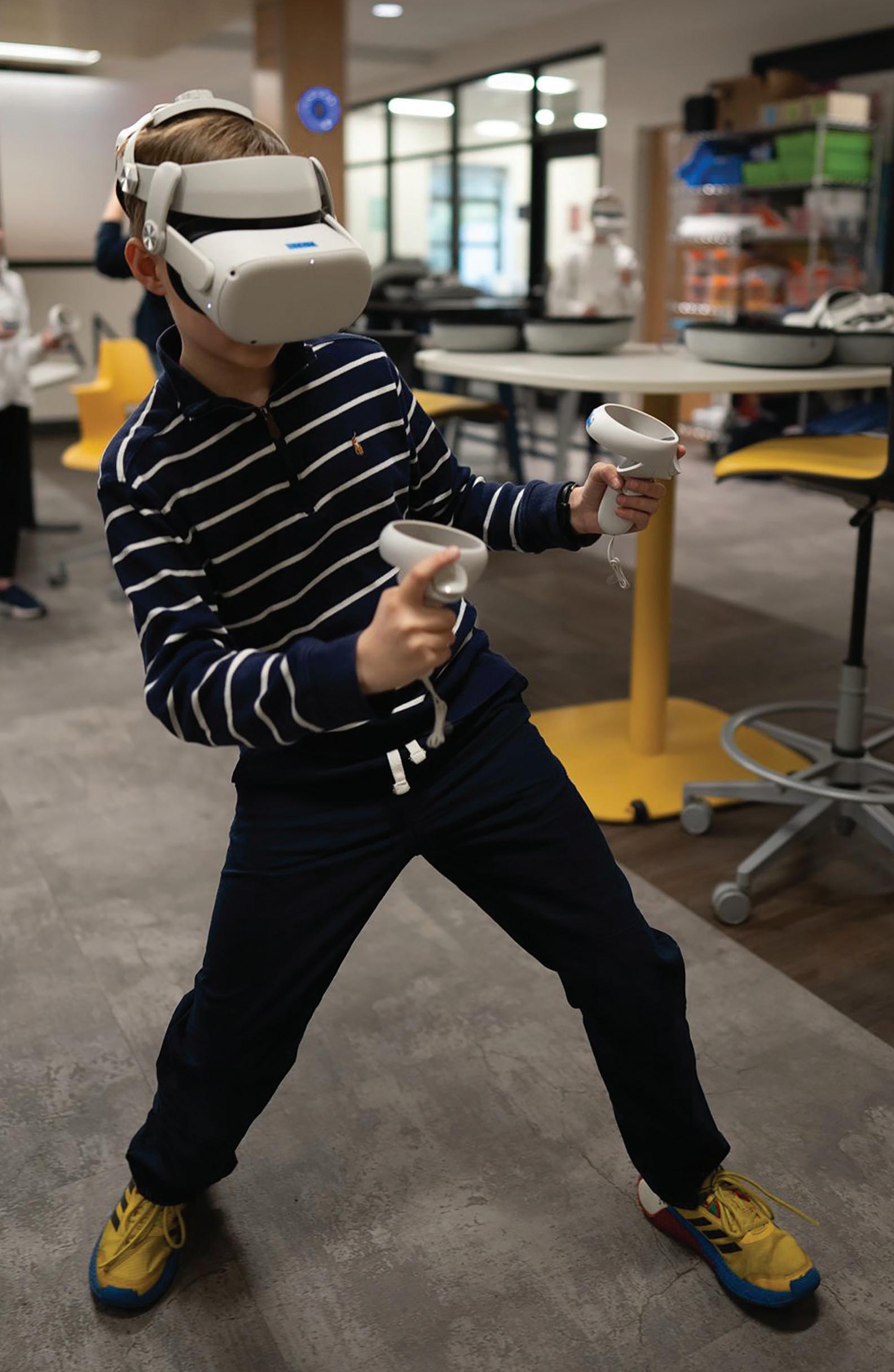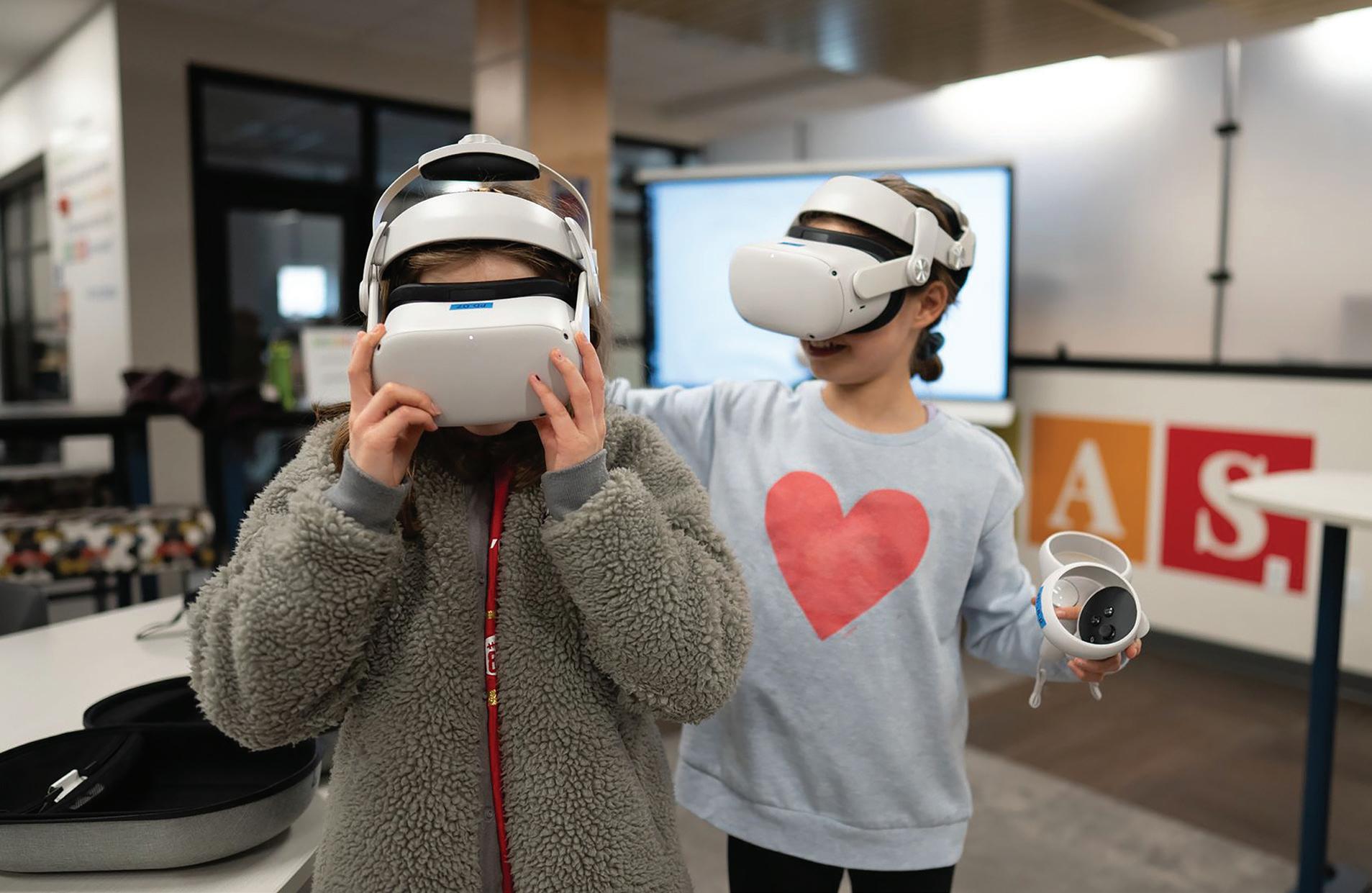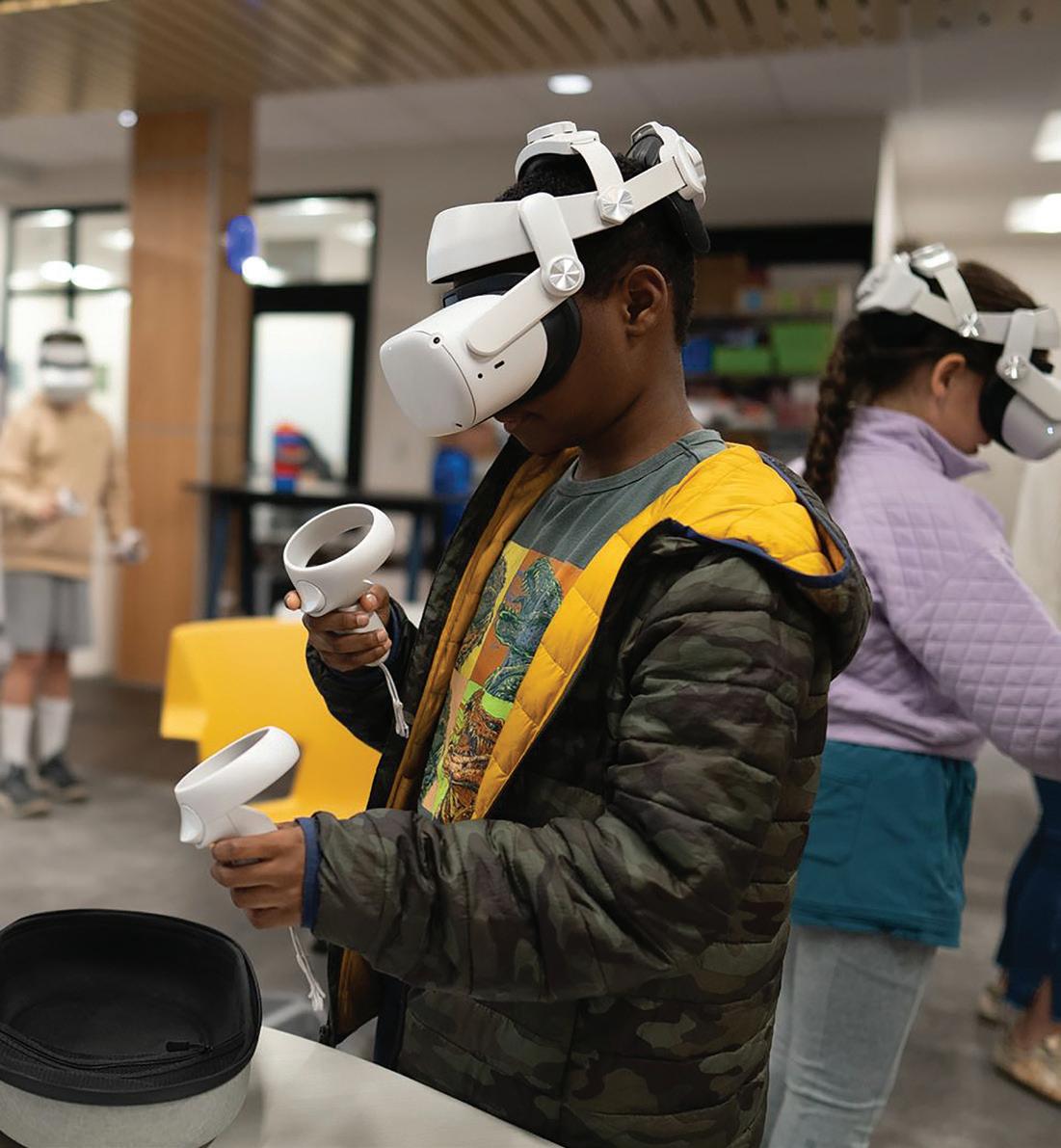
4 minute read
Let's Get Virtual
Lower School students engage with virtual reality technology to learn engineering concepts through hands-on experiences and enhance their understanding of complex concepts in a tangible way.
Written by Anna Maria Della Costa.
Hudson Tyree-Rodriguez stood in the IDEAS Xchange space at Providence Day and built a roller coaster that included a drum.
The fifth-grader added the drum for noise because it was an option in the virtual reality exercise where students learned being an engineer means making adjustments.
“It’s really interesting because you can use anything you find to create something,” Hudson says. “And, you learn how to fix stuff.”
Providence Day fifth graders built Rube Goldberg creations this semester using virtual headsets - boosting science lessons on the history of the Pulitzer Prize-winning American cartoonist, inventor, and innovator of simple machines.
“The experience allows students to use various levers, pulleys, inclined planes, wheels, and axles to build their own machines,” says Tomarra Londeree, the Education Technologist who collaborates with teachers to integrate student experiences through various digital media. “[It] will also require our students to use their problem-solving and critical thinking skills by using trial and error to build their machine.”
The Rube Goldberg exercise is part of the school's commitment to introducing Lower School students to multiple digital media resources. Exposure to digital media equips students with the tools they will need as future leaders in the community, educators say.
“Integrating technology into the classroom allows teachers to have more engaging lessons, which increases student motivation and participation,” Londeree says. “The key to successful technology integration is intentional planning, vetting age-appropriate content, and aligning the goals with our curriculum. It's important for us to teach healthy habits to our students inside of school so they are able to navigate the digital world outside of school.”

Marcie Jacobs, a fifth-grade teacher, says digital media such as virtual reality reinforces classroom teachings, and abstract ideas are more tangible and memorable for students.
“[Virtual reality] can cater to different learning styles, ensuring that all students have the opportunity to grasp complex concepts effectively,” Jacobs says. “We are privileged to use virtual reality technology to enhance our fifth-grade science units. Next up... space, perhaps?”
Providence Day offers multiple ways for our TK-5 students to use technology in the classroom to continue staying at the forefront of new technologies. Teachers use Seesaw as the platform, where students are able to record audio to explain concepts, draw pictures to explain their thinking, type sentences and paragraphs to answer teacher responses and take pictures to capture their learning.
“They can essentially create digital portfolios of their learning throughout the school year,” Londeree says. “It's amazing to see the growth and progression of their digital portfolio through the years.”
Students also use digital breakouts or escape rooms on their iPads. Londeree says they use critical thinking and problem-solving skills to solve clues to break out.
“When they finally solve a clue, they are filled with such excitement and are so proud that they persevered through something that was very frustrating and difficult to them at first,” Londeree says.
Digital literacy is another digital media that is used throughout Lower School. Epic! books, Raz-Kids, Scholastic News, and News-O-Matic give students a selection of diverse literacy resources to ensure they can find books and articles on their reading levels and have exposure to age-appropriate news topics.
“Young students definitely need to hold a book, learn reading strategies, and comprehend the written word, but much of our daily news and information comes from digital media, so it's beneficial to expose young students to literature online,” Londeree says.

The Goldberg virtual reality experience is unlike any other because it incorporates mixed reality, meaning students are able to see the physical room and furniture they are in but are also able to build 3D machines within the virtual world.
Students chose from various tracks, balls, wheels, and pulleys to build roller coasters, marble tracks, basketball hoops, confetti cannons, or any simple machine.
“It’s amazing to see the ownership the students took of their own learning,” Ms. Londeree says. “I tell the students it's OK to fail. Try new things. If it doesn't work, make adjustments and try again, much like Rube Goldberg did when he invented various machines. It's all part of the engineering design process.”
Fifth-grader Lina Han says the experience was fun because “it’s a different way of learning how to do things.”
Londeree says she plans to offer students many more virtual reality experiences.
“I already have a teacher asking if we can send the kids to the moon,” Londeree says, “and the answer is ‘Yes.’”










